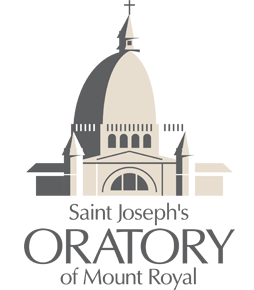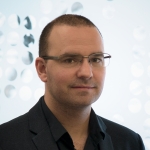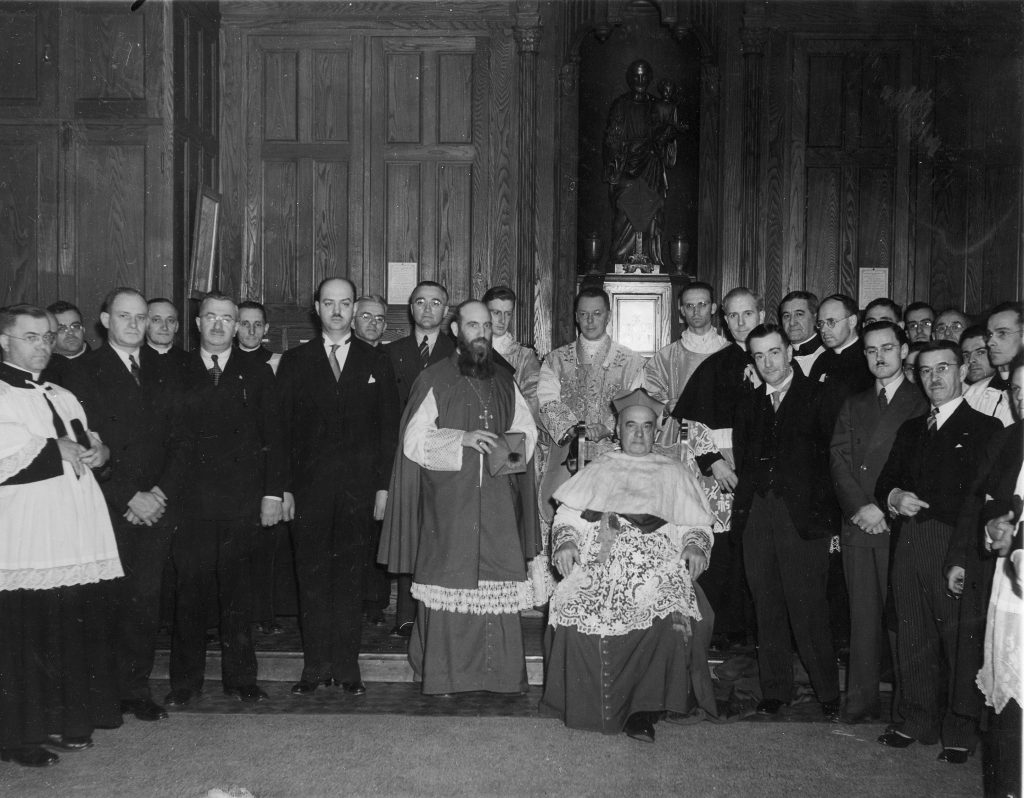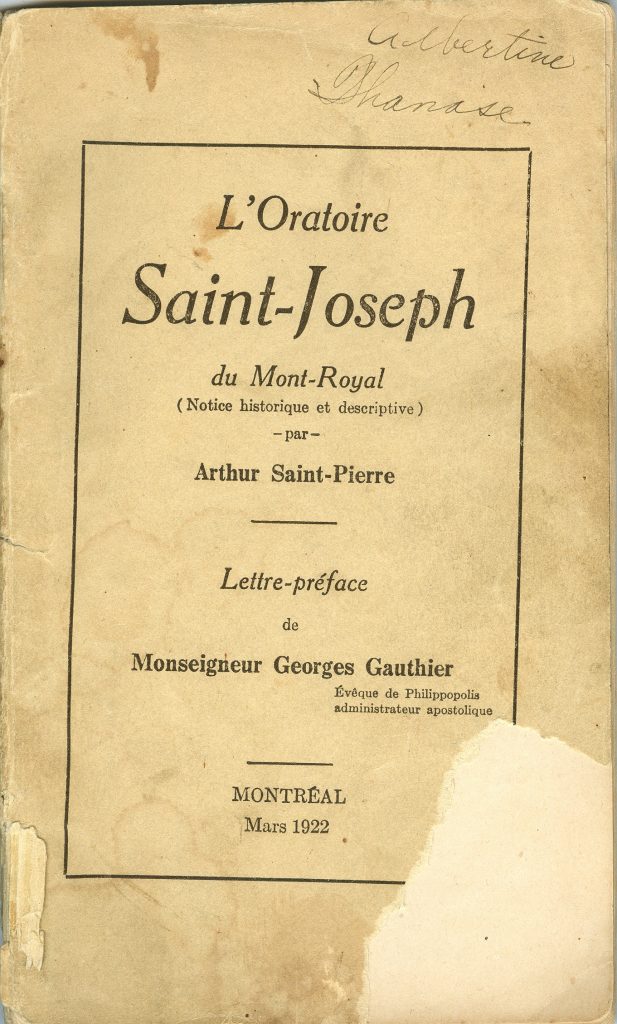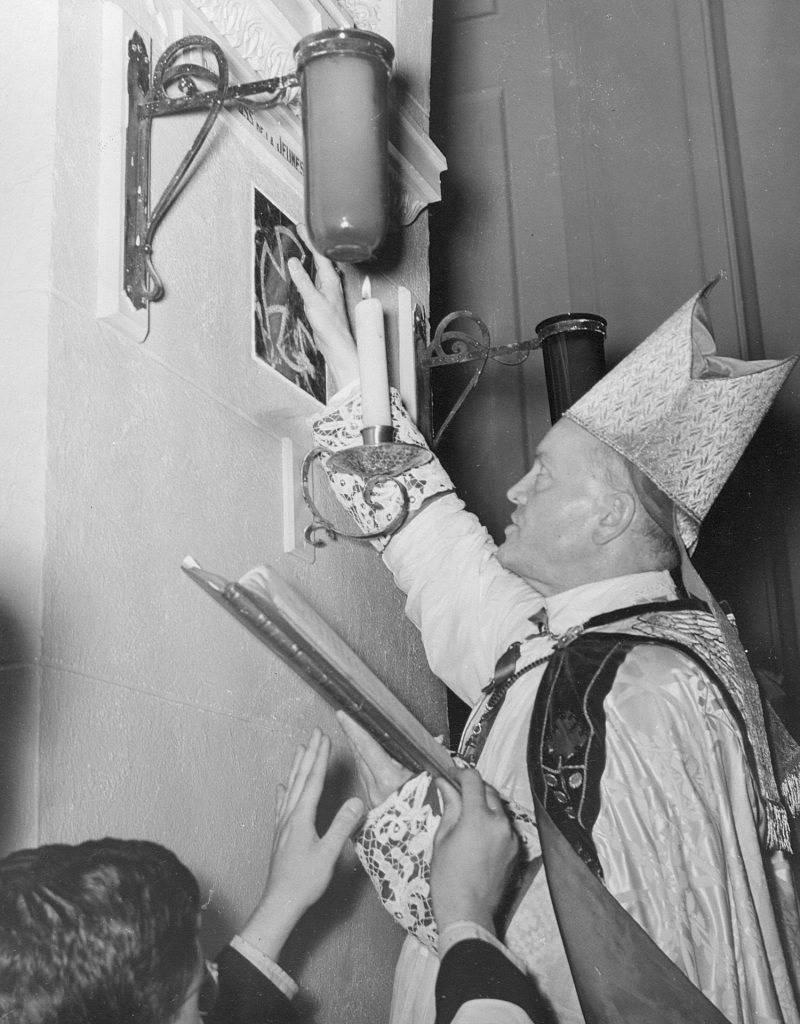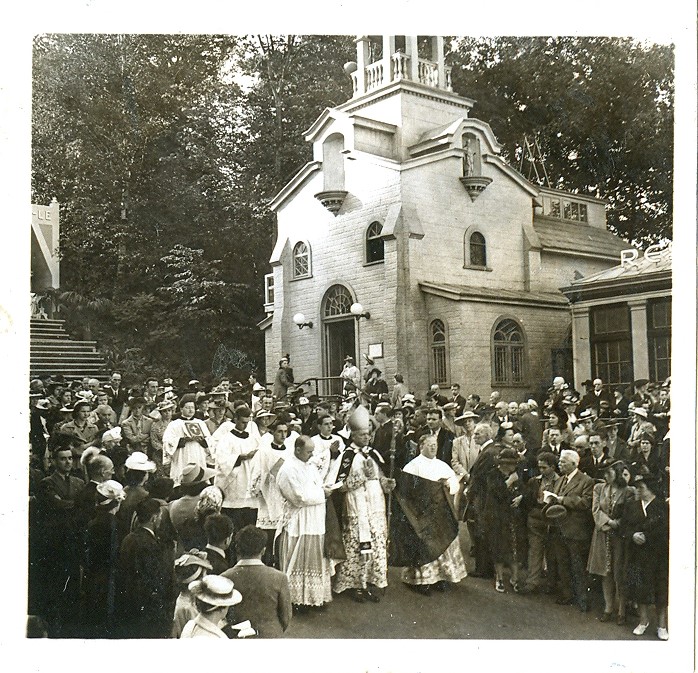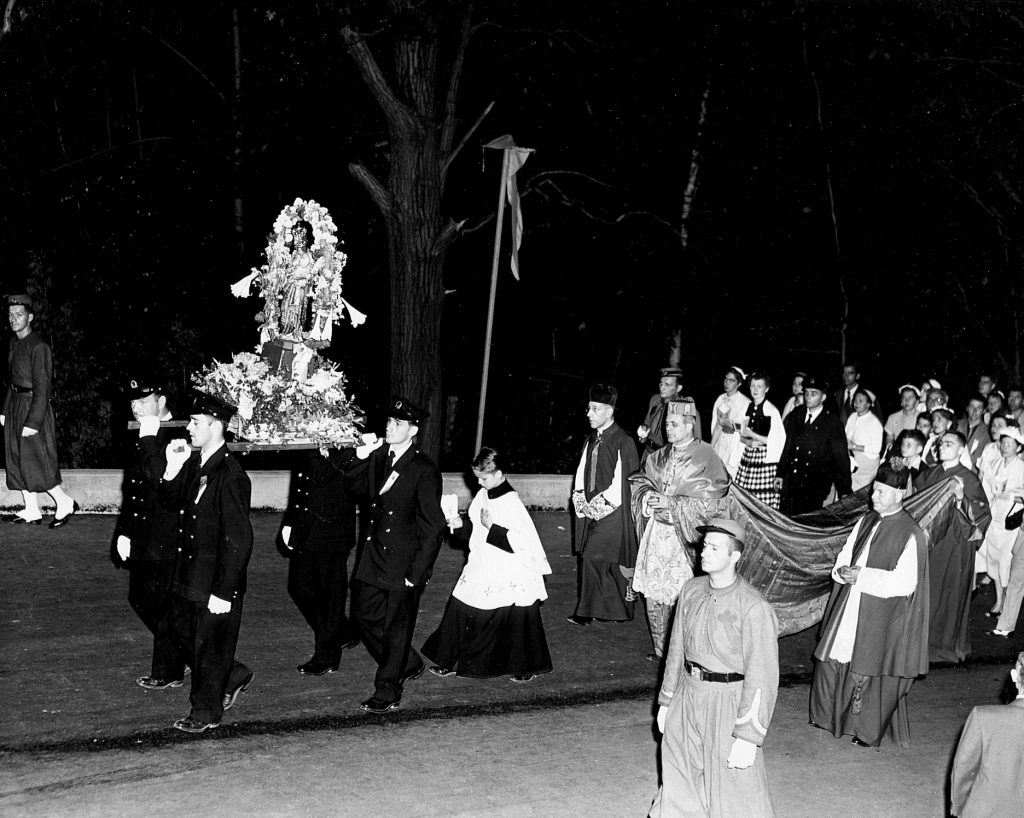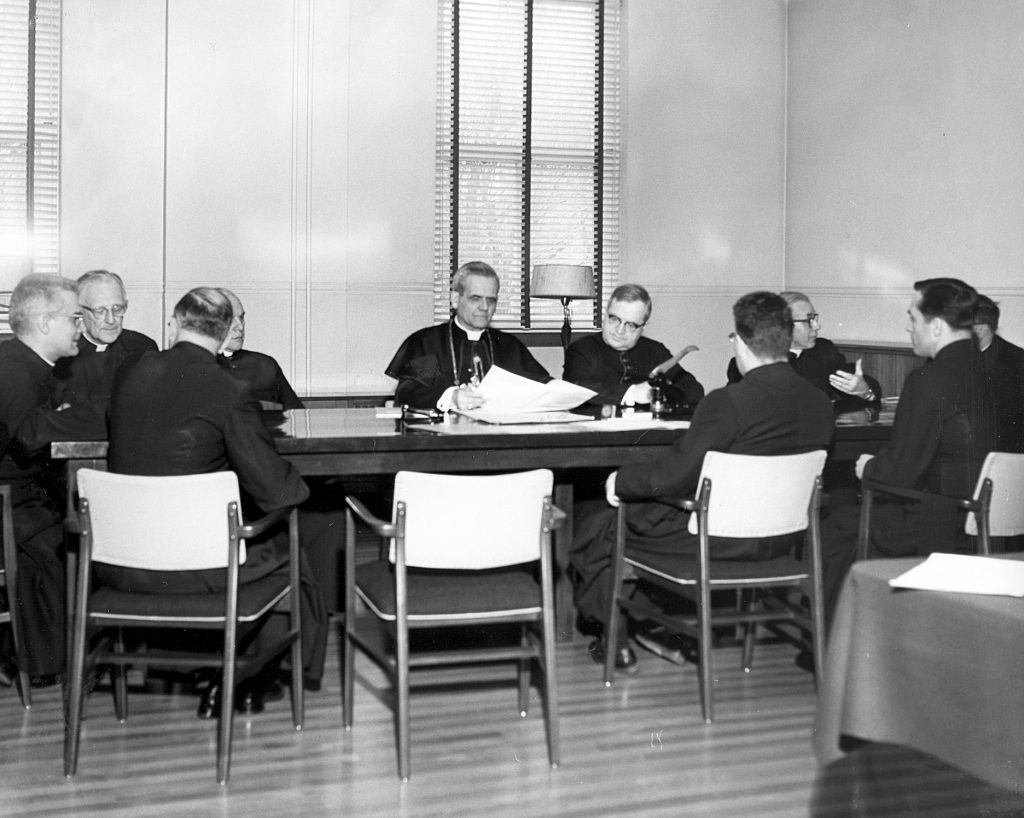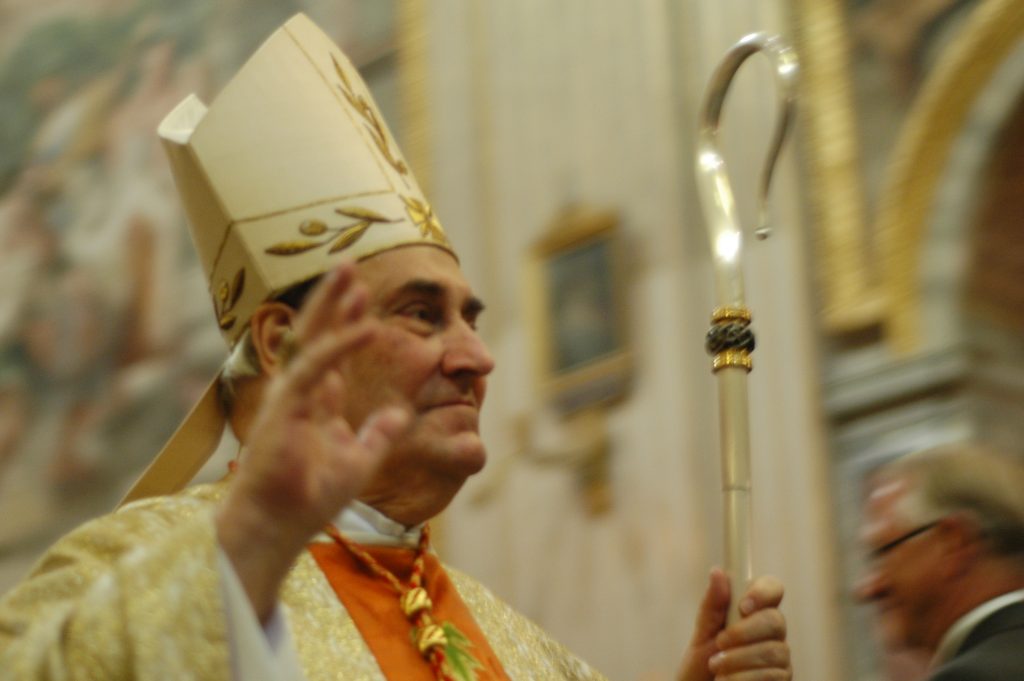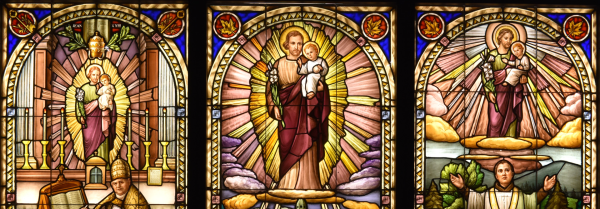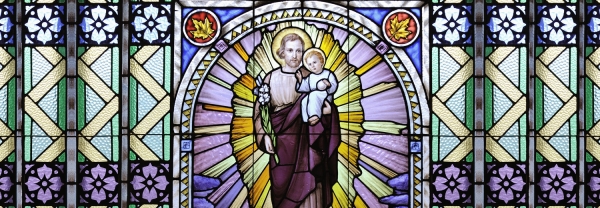Mgr Georges Gauthier (1871-1940)
Archbishop Gauthier holds the office of Archbishop of Montreal for barely a year. He has been described as a man of great eloquence and a highly educated man. He is actively involved in the creation of the Université de Montréal and is sympathetic to a greater presence of women and the laity in the activities of the Church.
He has at heart the pedagogical formation of the religious in his territory. It is distinguished by the creation of parishes for immigrant populations, especially German and Polish (Leblanc, DBECC, 487).
He was a long-time friend of the Oratory and authorized, in 1922, the publication of a brochure by Mr. Arthur Saint-Pierre on its history. He signed the preface.
Copy of the first historical study on Saint Joseph’s Oratory of Mount Royal published in 1922. CADRG
Bishop Gauthier was responsible for the choice of the burial site at the Oratory rather than at the cemetery of the Congregation of the Holy Cross in Ville Saint-Laurent. He is also responsible for the preliminary investigation into the possibility of a future beatification.
Mgr Joseph Charbonneau (1892-1959)
He was the 6th Archbishop of Montreal from 1940 to 1950. He is a brilliant intellectual and very active in the diocese.
Like his predecessor, he gives special attention to the field of education. He was a rather liberal man who had to deal with a conservative environment.
He is recognized as having a strong social conscience and his vision of the Church is tinged with this concern (Leblanc, DBECC, 362).
Bishop Charbonneau officially opened the diocesan process. He launches the search for the writings of Brother André. It was then necessary that anyone believing to be in possession of letters or other texts by Brother André produce them before the diocesan tribunal. The informative trial on virtues (to establish the existence of a true reputation of public holiness based on authentic depositions of living witnesses) and the trial of non-worship were conducted under his episcopate.
Cardinal Paul-Émile Léger, p.s.s. (1904-1991)
A flamboyant yet discreet character, Cardinal Paul-Émile Léger, p.s.s., was archbishop from 1950 to 1967.
He is especially recognized for his efforts for a moral reform of the Church, his stand against laxity in the cinema, tabloids and cabarets.
He is an ardent promoter of the rosary in the family on the radio. He attaches great importance to ecumenism and devotes the last years of his life to the defense of human dignity through concrete actions towards the underprivileged (Leblanc, DBECC, 608-610).
At the time of Cardinal Léger, the documents for the informative and non-cult process were sent to Rome. Pope John XXIII signs the decree introducing the cause in Rome. The Apostolic Process on the Virtues is opened. In November 1963, in a rather peculiar event, the remains of Brother André were recognized and his tomb was opened. But above all, three trials on cases of supposed miracles were opened.
Mgr Paul Grégoire (1911-1993)
Archbishop from 1968 to 1990, he was the one who had to apply the orientations of the Second Vatican Council. He set up structures for the laity and facilitated their involvement in the Montreal Church.
Preoccupied with social issues, he comes to the aid of the needy, single persons or families with housing problems. He gives an important place to the reception of refugees and is involved in the creation of the Father’s House, which helps people in a situation of homelessness.
Bishop Grégoire sums up his mission to implant a true spiritual animation from within (Leblanc, DBECC, 503-504).
Bishop Gregory does not personally intervene in the Cause, but many advances are taking place under his episcopate. The Bishops of Canada ask (and obtain) a dispensation not to wait 50 years after the death of Brother André to begin the final discussion on his virtues. Pope Paul VI personally votes to write the decree of heroicity: Brother André becomes Venerable. Then, on May 23, 1982, Pope Saint John Paul II made him Blessed Brother André! Two years later, Bishop Gregory welcomed the Pope to Montreal.
Mgr Jean-Claude Turcotte
Cardinal Jean-Claude Turcotte was elected Archbishop of Montreal on March 17, 1990. A man of action and rallying, he is involved in many committees of the Church in Quebec and Canada. He was approached several times to offer catechesis to the youth. McGill and Concordia Universities awarded him honorary doctorates to underline his commitment to theology and his support of religious, spiritual and charitable works. He resigns in 2012 and becomes Archbishop Emeritus of the Diocese of Montreal. He died on April 8, 2015.
A friend of the Oratory, Cardinal Turcotte will follow with attention the diocesan process related to a case of presumed miraculous healing in 2005. It is this cure that will allow the two official documents to be submitted to the Medical Commission in charge of studying the case. In 2009, the Medical Commission concluded that there was a scientifically inexplicable cure and the recognition of Brother André’s intercession. Pope Benedict XVI pronounced the promulgation of the decree recognizing a miracle attributed to Blessed Brother André. Cardinal Turcotte will celebrate the Mass of Thanksgiving for Blessed Brother André at the Olympic Stadium on October 30, 2010.
Sources
- LeBlanc, Jean. Dictionnaire biographique des évêques catholiques du Canada. Wilson & Lafleur, collection Gratianus, Série Instruments de recherche. 2002
- Website of the Diocese of Montréal: https://diocesemontreal.org/en/archdiocese/history
